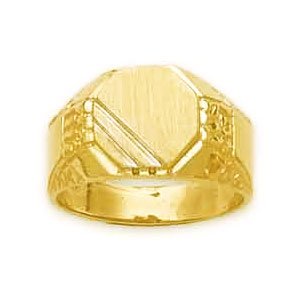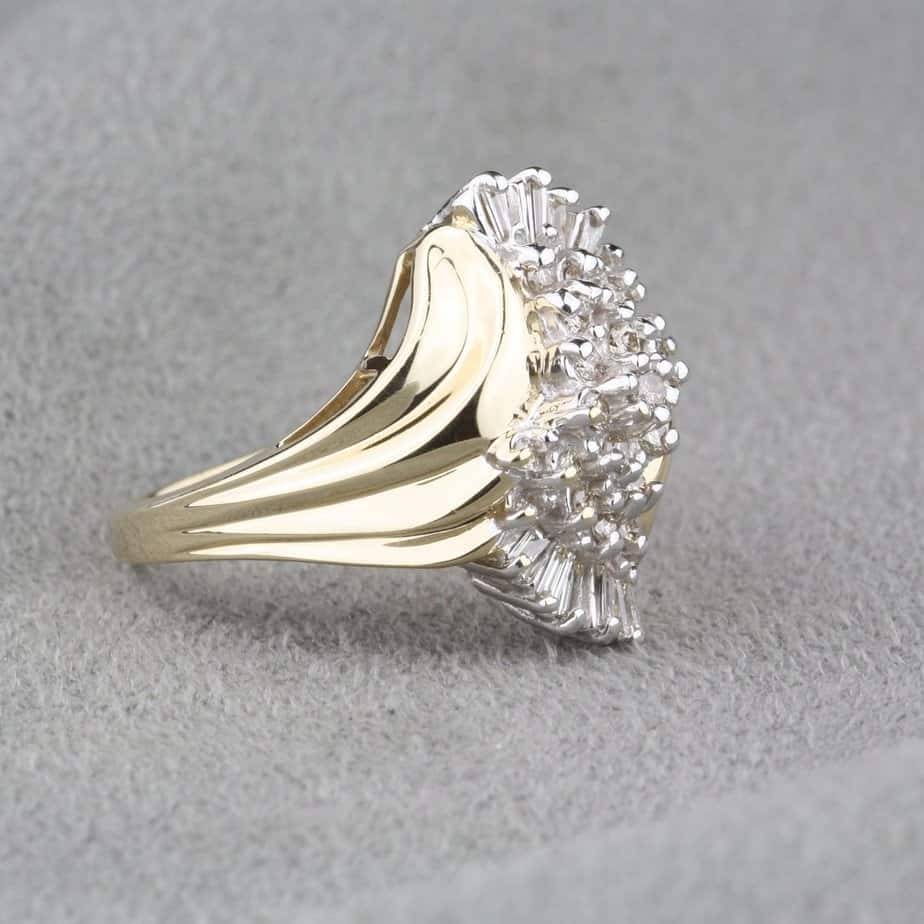- Best Wedding Invitation Websites for 2024 - December 8, 2023
- Best Wedding Planning Apps this Year - December 7, 2023
- 11 Best Wedding Registry Websites for 2024 - December 4, 2023
When it comes to jewelry, people go crazy for both 10-karat and 14-karat gold items, but not everyone seems to be clear on the difference between the two. One wonders, is there a huge difference between the two, and which is better? So, in this article, we want to look at exactly what the differences are.

Gold Alloys
To begin with, we should talk a little bit about gold alloys and why there is a need for them in the first place. The main reason is that gold, without any other metals added to it, is just much too pliable and soft to make jewelry with. Hence, jewellers must add in some additional metals to firm up the jewelry and increase its durability.
14-Karat Gold Purity
A karat itself is a measurement of purity with regards to gold, with the maximum purity being 24-karat gold. 24-karat gold is pure gold, and so logically then 14-karat gold is closer to pure gold than 10-karat gold. Since each karat is a measurement, or part, you can say that 14-karat gold is 14 parts pure gold out of a possible 24.
So, once again, if you see any indication of the number of karats in your piece of jewelry that you are either considering buying, or already own, that number is referring to a level of purity out of 24.
Check out these affordable 14k gold stackable rings
How Pure Is 10-Karat Gold?
Ah, the obvious question. Clearly, 10-karat gold is less pure than 14-karat gold – precisely 4 parts less pure. This means that 10-karat gold is 41.7% pure gold out of the whole shebang, with the other percents being taken up by metals such as silver, nickel, copper, or zinc.
10-karat gold has a number of labels given to it which are frequently seen, including 10K, 10KT, 10kt, and even the marking of .417 (referring to the percentage of pure gold).

Back To 14-Karat Gold
The percentage of pure gold in 14-Karat gold, in case you aren’t a math whiz, is 58.3%, which explains why many 14-Karat gold pieces of jewelry are marked with indicators like .583 or sometimes .585. Perhaps more frequently, you will come across labels such as 14K, 14KT, or even 14k. The remainder, again, is made up of metals like copper, zinc, or silver.

To Consider
Ok, so we’ve basically spelled it out as best we can – 14-karat gold contains more pure gold than 10-karat gold. Now, when it comes to quality, this is where you might think that 10-karat gold is going to be cheaper and hence lower quality, but this isn’t necessarily true. Why? Because, for one thing, 10-karat gold does have the advantage of being more durable, due to having extra strength provided by other metals. So, in a sense, 10-karat gold makes up for its lack of purity with some durability.
14K Gold Advantages
On the other hand, 14-karat gold is blessed with some spectacular coloring, since it does contain more pure gold. Hence, its colors are brighter and more lustrous, while 10-karate gold has a more faded yellow appearance.
Another consideration when buying either 14-karat or 10-karat gold is that 10-karat gold tends to tarnish more easily than 14-karat gold, due to the other metals included in the alloy.
Durability
Let us not dismiss the durability factor so quickly when it comes to 10-karat gold. 10-karat gold is, in general, a fair bit tougher than 14-karat gold and so it may indeed have a longer lifespan because of this. Purer gold, as beautiful as it is, is soft by nature, and so jewelry which is more pure is actually more susceptible to getting damaged.

Of course, there are exceptions to this rule, because we must consider the other metals that are making up the alloy. If a jeweller is able to add in the right elements, a 14-karat gold ring can, in some cases, be stronger and better-built than a 10-karat gold ring. It really depends on the way the ring was made, and what alloys are actually in it, and the percentage of each.
You may want to ask about this when speaking to your jeweller about a particular piece. They will hopefully note your somewhat pro-level of knowledge and be more open with you about the sale, since jewellers, sometimes don’t always give their customers a whole lot of credit when it comes to gemology.
Nickel Allergy
If you are allergic to nickel, you should specifically be careful with 10-karat gold, because there is often more of it contained in 10-karat gold jewelry. This is one of the major downsides to 10-karat gold, in that it is more disagreeable to those who have skin irritations or allergies.

That said, don’t think that 14-karat gold means you’re completely off the hook either. If there is some way you can test this, such as trying the ring on for some period of time, then you may want see if you can do this before you buy it outright.
How To Choose Between 10-Karat And 14-Karat Gold
Well, we’ve laid it all the info out on the table. Now its time to make some decisions. Which should you buy, based on all of the given info?
We must say that there is no clear “winner” here. Both 10-karat and 14-karat gold pieces will have their individual pros and cons, but lets just recap those:
10-Karat Gold Advantages
- More durable due to higher percentage of tougher metals in the alloy
- More resistant to scratches and scuffs
- More affordable than 14-Karat gold pieces
10-Karat Gold Disadvantages
- Not good for those with strong nickel allergies
- Dimmer colors in general
- Not as valuable in terms of gold purity
14-Karat Gold Advantages
- More stunning with brighter colors
- Higher price value
- Less allergic reactions
14-Karat Gold Disadvantages
- More costly
- Less scratch resistant
- Easier to damage due to less durability
Click here for some Morganite gold options!
